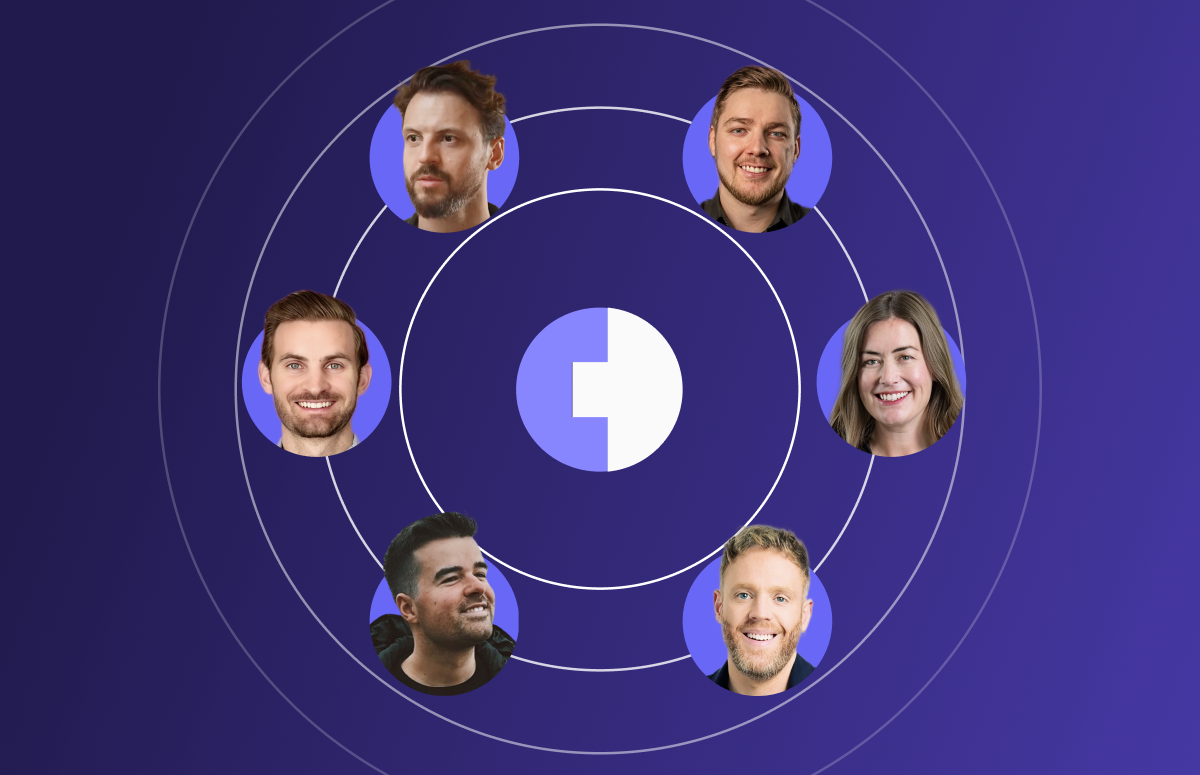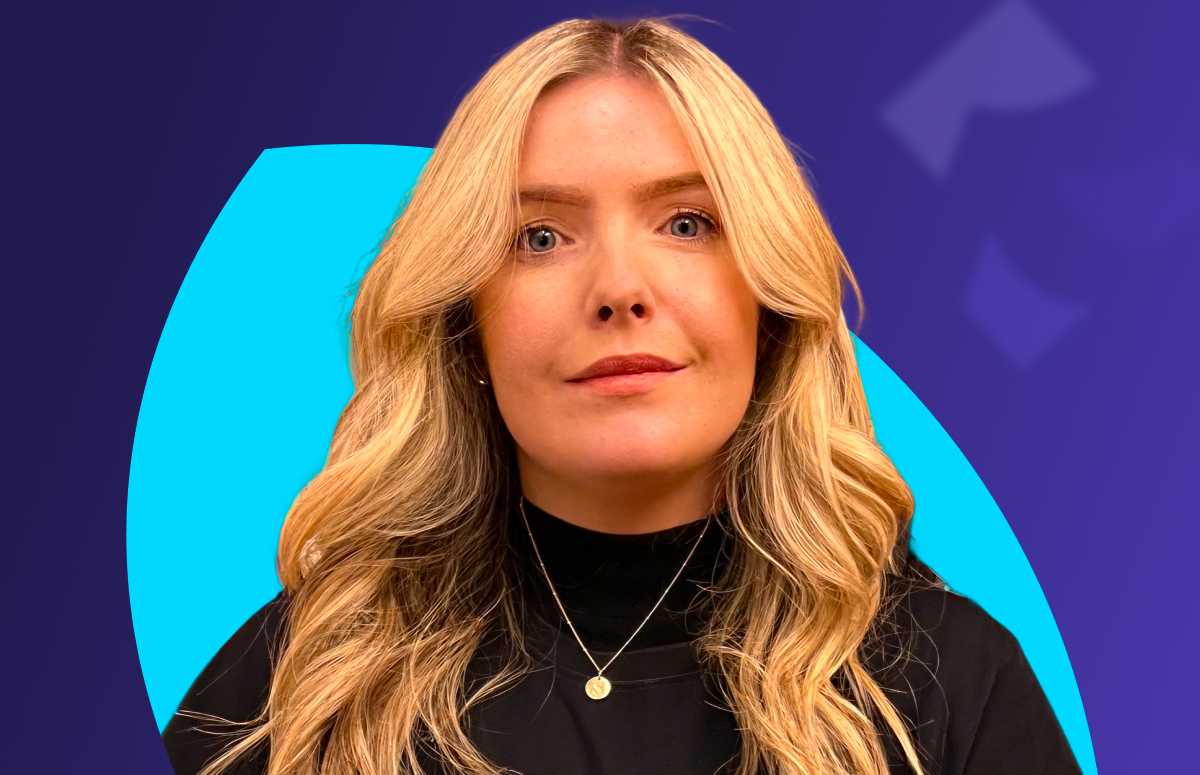Date-a-vendor Inbound Playbook: From Hand-Raisers to Happy Ever After
You’ve done the work. You’ve launched smart campaigns, shared thoughtful content, and built a site that actually converts.
Your ICP is engaging - showing up to events, reading your thought leadership content, leaving positive signals across channels.
But here’s the catch: engagement doesn’t always mean intent.
Your hand-raisers aren’t as hot as you’d hoped. Some demo requests miss the mark entirely. And suddenly, that dream of predictable inbound pipeline feels a little further away.
Welcome to the “keeping the spark” phase of your go-to-market love story - aka the next chapter in your Date-a-Vendor journey. You’ve found a match (inbound leads), but now it’s about building a real relationship.
Because just like dating, what happens after the first spark matters most.
That means strengthening your relationship with your data, tightening your targeting, and knowing exactly when to pass to sales - and when to keep nurturing.
Because, as Steffen Hedebrandt, CMO and co-founder at DreamData, puts it:
“Whatever we do in marketing, there’s no ROI before the sales team gets the signature signed. We’re just sweeping the ice before the rock hits.”
Let’s talk about how to keep things efficient, aligned, and full of the kind of momentum that leads to high-quality inbound demand.
Awareness ≠ Readiness
Let’s say you’re now reaching a large proportion of your ICP each quarter. Your brand is increasingly visible across social feeds, newsletters, SEO, and ad campaigns.
But for some reason, that visibility isn’t translating into meaningful buyer action. The friction has shifted further down the funnel.
- They know your name - but they don’t really know what you do.
- They’ve seen your ads - but haven’t visited your site.
- They’ve read your blogs - but they’re not ready to talk (yet).
This is a classic case of marketing’s middle - the hazy zone between demand creation and demand capture.
The leap from awareness to readiness isn’t straightforward. Think about how you buy: it’s rarely after reading a newsletter or seeing an ad. It happens when a real need emerges, and a brand is already in your mind as the one that can solve it, faster or better than the rest.
What you’re experiencing isn’t failure - it’s friction. And isn’t not unusual.
Steffen said:
“We’ve done the awareness play. But I just wish we could accelerate that movement from ‘I’ve heard of DreamData’ to ‘I’m ready to have a sales conversation.’”
Bridging the Intent Gap
The gold standard for most B2B marketers? The inbound demo request.
But not just any demo request - one that comes from a qualified prospect who knows who you are, understands what you offer, and actually wants to talk.
The problem is, too often we try to shortcut the process. We push people to “book a call” before they’re even sure they have a problem, let alone whether you can solve it.
The result?
Low-quality leads. No-shows. Wasted sales time. And, even worse, a lost first impression.
Steffen explains:
“I don’t think I’ve ever booked a call with a company I didn’t know anything about. I need to do my own research first.”
This is the intent gap - the space between someone knowing your name and being ready to take a real sales meeting. And it’s a space many marketing teams ignore.
But here’s the truth:
Rushing someone into a demo call doesn’t speed up your sales funnel. It breaks trust.
Especially in complex sales cycles, trying to force the demo too soon can actually delay the deal, or kill it entirely.
So what’s the smarter path?
Start building momentum with soft conversions - the kind of touchpoints that move prospects closer to a demo on their timeline, not yours.
Think:
- Insight-driven content that gives value, builds credibility, and makes a future “book a demo” ask feel earned.
- Recurring live formats providing a low-barrier way to engage directly with the brand and explore its thinking.
- Smart retargeting and nurture loops, focused on newsletter opt-ins, podcast subscriptions, and social follows - not every CTA needs to be a form fill.
The goal is to stay relevant and useful until the buyer is ready - and when they are, they’ll come to you. Fully informed. Confident in what you do. And far more likely to convert.
So what might that look like?
- Create “pre-demo” CTAs: Instead of just “Book a demo,” offer micro-asks like “See a product walkthrough,” “Get our buyer checklist,” or “Try a mini version.”
- Layer intent signals before sales outreach: Don’t send to sales after a single asset download. Require a combo like: 2+ pricing page visits + job title match + return visit within 7 days.
- Create an “Intent-Only” nurture path: Build a lightweight email journey triggered when someone completes a high-intent action (e.g. benchmark download or late-stage webinar) but doesn’t request a demo. This might include:
- A case study on a peer company
- A pricing transparency article.
- A product tip or preview from your founder
Progressive Intent
In traditional B2B marketing models, intent is treated as binary: either someone is in-market, or they’re not. Either they fill out the form, or they bounce.
But real buying journeys aren’t that clean.
Buyers meander. They consume in silence. They ignore your CTAs for months - until something changes.
That’s where progressive intent comes in.
Progressive intent is the idea that buying readiness builds in layers, over time, through repeated and increasingly meaningful interactions with your brand. It’s not a switch - it’s a slow dial turning.
Think:
- Serving content based on buying stage, not persona alone.
- Leveraging retargeting intelligently - not just by page visits, but based on deeper signals (like account-level firmographics).
- Creating “next step” CTAs that are valuable even for non-buyers - like invites to executive roundtables, product webinars, or even a simple LinkedIn DM asking, “What caught your eye?”
As Trinity Yuen from UserGems put it:
“It’s not about creating noise. It’s about sequencing value, so that when the moment is right, you’re the first name they think of”.
So what might this look like?
Map buyer journey stages to content inventory
- Awareness: POV blog posts, market commentary, social threads
- Interest: Benchmarks, ROI tools, explainer videos
- Consideration: Customer interviews, side-by-side comparisons, product walkthroughs
Use progressive retargeting sequences
- First ad: “Here’s the problem you might not know you have”
- Second ad: “How leaders in your space are solving it”
- Third ad: “Get the benchmark/tool / guide”
Deploy “middle-funnel” CTA ads
- Instead of “book a call,” try “Join 3,000 marketers who get our GTM tips weekly”
- Use this to build soft opt-in and then nurture via email or social
Layering in CEPs: Make Buyers Think of You Before They’re Ready
One of the smartest ways to accelerate readiness is by aligning your brand with the triggers that lead people into the market in the first place.
These are called category entry points, and they’re the real-world situations that cause a potential buyer to look for a product like yours.
Drew Leahy, Founder of Peanut Butter Comms, said:
“This is a great shortcut when building associations because most businesses will get stuck at the question of ‘what do we associate ourselves with?’ … You want to go deeper and narrower - associating yourself with the situations that arise when people would need a solution like yours.”
Let’s say you sell a contact database like Cognism. A few CEPs might be:
- Expanding into a new region and needing new contact lists fast.
- Launching an outbound team for the first time.
- Replacing a data vendor that got too expensive.
You don’t need to wait for the buyer to Google your category. If they experience the scenario, you want to be the brand that pops into their mind.
How to apply this:
- Build content around the CEPs, not just your product. For example: “How to build a territory plan for a new region” or “What to do when your data quality tanks mid-quarter.”
- Seed those messages across dark social, search, and sales enablement. Make sure your AEs can use CEP-based storytelling too.
- Test LinkedIn and paid media targeting based on job titles + situational messaging: “Hiring a RevOps lead? Read this first.”
Create a CEP bank. Write down 5-7 real triggers that put someone in-market for your category.
Then ask: Are we creating content and campaigns for these moments - or just for the middle of the funnel?
What a High-Performing Inbound Path Actually Looks Like
A high-performing inbound journey doesn’t hinge on a single, flashy conversion point - it’s a thread of consistent, relevant moments that build familiarity and trust until action feels obvious.
For example:
➡️ A VP of Sales scrolls past your benchmark stat on LinkedIn. Scrolls back. Clicks.
➡️ They land on your blog. It’s punchy, data-driven, clearly written for someone like them.
➡️ They subscribe to your GTM newsletter. A week later, they get a teardown of outbound motion from a peer company and forward it to their RevOps manager.
➡️ Two more people from the same domain hit your site over the next five days.
➡️ That VP returns, visits the pricing page twice, then downloads your buyer checklist.
➡️ The next morning, your SDR reaches out referencing the checklist and offering a low-pressure walkthrough.
And every single inbound path will look different. Varying time scales between actions. Different content that catches their attention. With a range of research depth done before they raise their hand.
It’s not a rigid funnel. It’s a relationship.
Utilising Data: Build an Engagement Score That Actually Means Something
If your lead scoring model is just counting clicks, you’re not scoring intent - you’re scoring noise.
So, it’s important to weigh the important actions against the ones that are unlikely to signal any real intent.
Steffen shared that his team created a scoring model that combines:
1. Firmographic Fit First
Before any behavioural scoring even begins, accounts must qualify against the basics:
- Company size.
- Industry and geography.
- Relevant tech stack.
- Revenue potential.
Why?
Because the perfect lead from the wrong type of company is still the wrong lead. Scoring only works if the foundation is right.
2. Behavioural Signals That Matter
- Depth: Did they hit one blog post, or explore three product pages and the pricing tab?
- Breadth: Are multiple people from the account engaging, or is it just one curious visitor?
- Type: Did they read a blog or attend a late-stage webinar?
A pricing page visit from a relevant stakeholder might outweigh three newsletter opens from a junior team member.
3. Recency + Frequency
Timing is crucial:
Someone who visited five pages three months ago isn’t as promising as someone showing similar activity over the last five days.
Fresh, consistent engagement is what pushes accounts toward the sales threshold.
4. Threshold-Based Routing
Steffen explains:
“Our sales team never works cold. We control who they work on and when. I’d love to keep raising the threshold.”
Only hand off accounts that show signs of both fit and intent. The goal isn’t to hit MQL quotas - it’s to protect sales capacity for the accounts most likely to close.
Only once an account reaches a certain threshold do they get routed to sales.
Make Content the Connector
If you’re seeing friction between awareness and demo requests, you may have a content gap.
When there’s nothing valuable for buyers to engage with between seeing your brand and speaking to sales, they’ll drift. Not because they’re not interested, but because you haven’t given them a reason to lean in.
Often, the missing piece is content with purpose.
What moves the needle isn’t just more content - it’s the right content: assets that deliver genuine value without pushing for a sale. The kind that buyers are willing to exchange their attention for, because it helps them solve a problem, learn something new, or make a smarter decision.
The shift happens when you stop asking, “How can we get people to book a demo?” and start asking, “What’s worth showing up for?”
Think:
- Original research or benchmark reports built on proprietary or market data.
- Live formats like webinars, roundtables, or LinkedIn Lives, where your ICP can engage without pressure.
- Interactive tools or calculators that help users self-diagnose or explore their potential ROI.
This type of content creates a fair value exchange. You give insight. They give attention. And in that moment, a soft signal of intent begins to form.
What this means for you:
✅ Build content that answers questions before sales ever picks up the phone
Your buyers are researching, with or without you.
The earlier you can educate and frame the problem, the more likely you are to shape how they evaluate the solution.
✅ Use nurture flows and retargeting to “thread” engagement across formats
If someone downloads a report, invite them to a live session. If they attend, recommend a follow-up article, podcast episode, or case study.
This content “threading” keeps your brand top of mind while progressively deepening the relationship.
✅ Track which assets drive re-engagement - and double down
Some content is sticky. Others fade into the noise.
Find out what pulls people back: your boldest opinions, your sharpest benchmarks, your most practical tools. Then build more of it.
Content isn’t filler between ads and demos - it is the engine that warms intent. Great content marketing doesn’t push. It pulls. It builds momentum until your buyers are ready to act.
Here are some more content ideas you could try:
- Anchor your content around your buyers’ moments of tension:
- “Why aren’t my outbound emails converting?”
- “What’s a realistic CAC benchmark for my industry?”
- Thread content across formats:
- Report download → podcast episode on key insight → newsletter follow-up with commentary from your execs
- Use consumption-based nurture triggers:
- If someone reads 3+ blog posts on one topic, enrol them in a drip with your best resources on that topic
- Promote your highest-performing content weekly:
- Identify which content is driving multiple page sessions or return visits - and amplify it across your paid and owned channels.
Let Sales Shape the Funnel Too
Great inbound isn’t just about smarter marketing - it’s about tighter sales alignment.
If you’re not actively using feedback from your AEs and AMs to improve how you route, score and convert leads, you’re missing out on the sharpest insights available.
Ask your sales team:
- What do the best inbound leads have in common?
- Which assets do prospects bring up most on calls?
- What objections or misconceptions show up again and again?
- What makes a lead feel “ready” versus too early?
- You can even build a lightweight feedback loop:
After each inbound demo, have AEs log: “What content brought them in? What did they already know? What made them convert or stall?”
That input helps:
- Marketing sharpen its scoring and sequencing.
- Sales get warmer, better-informed leads.
- Everyone move faster with fewer dead ends.
- When marketing and sales align on what a good inbound opportunity looks like, the whole system starts compounding.
Final Checklist: From Engagement to Inbound Demo
Ask:
- Are we tracking engagement that reflects readiness, not just clicks?
- Do we have “pre-demo” CTAs and middle-funnel offers?
- Is our content mapped by buyer stage, not just persona?
- Are we promoting the content that drives repeat engagement?
- Are we protecting sales time by raising the handoff threshold?



